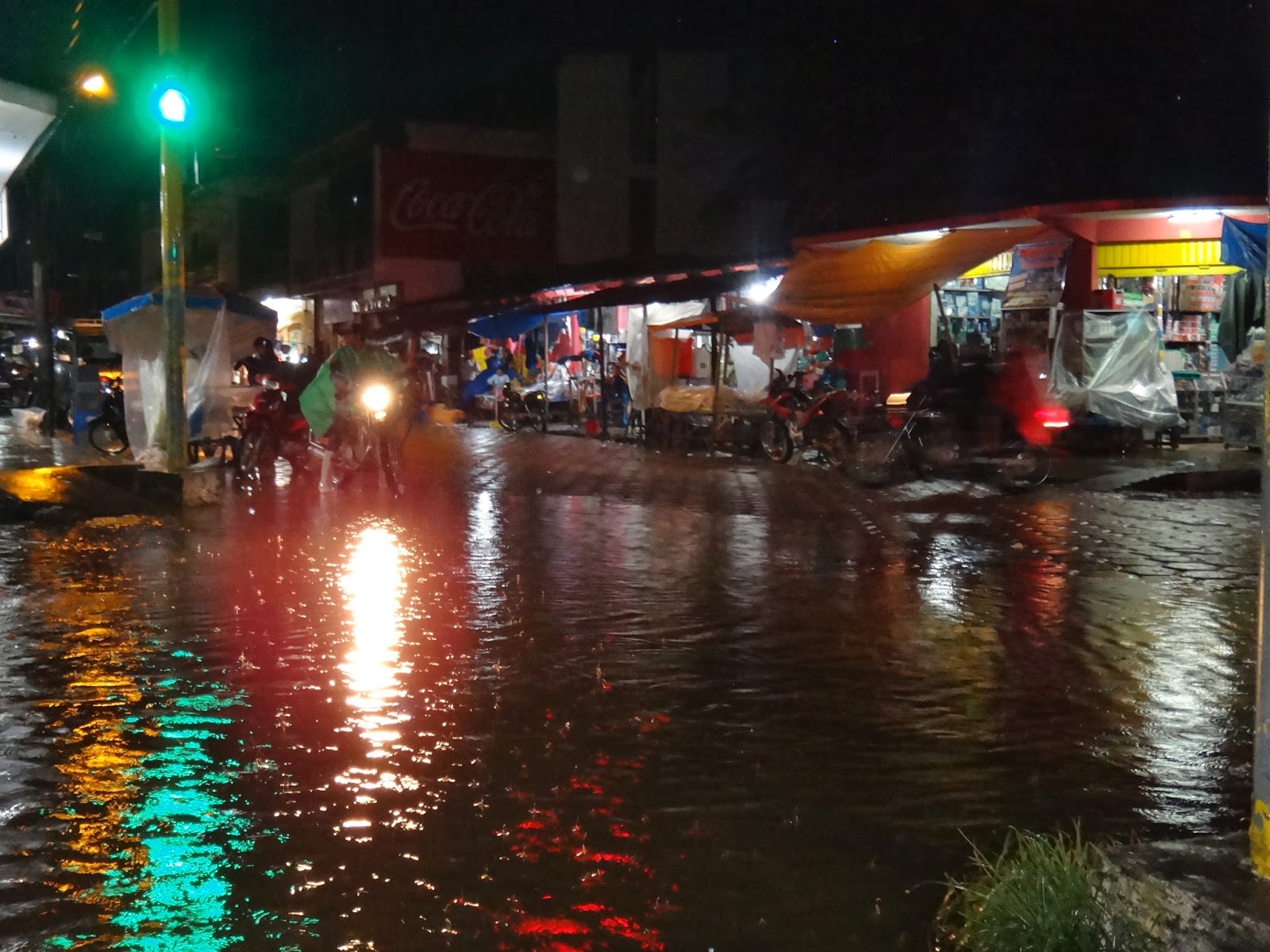Some of you have noticed we didn’t leave for the field last
week, so it’s probably time for another update. Last week, Bolivia declared a
state of emergency because of extensive flooding.
San Borja has had some flooding, but the communities along
the river have been really affected. The flooding has really hit the roads
hard and many of them are completely under water. During the dry season, the
taxi ride between San Borja and Trinidad takes around 5 hours. One time, we
even made the trip in 4 hours. When we made the trip a month ago – still early
in the rainy season – we got stuck overnight in a tiny town in between San
Borja and Trinidad and the travel time was 9 hours total. However, the second
half of the trip (5 hours) included us sharing a back seat of a van with a mom
and her son of 10 years, who threw up continuously throughout the whole ride. The
poor kid had terrible car-sickness and rode with his head in a plastic bag. He
filled up 4 or 5 plastic bags and when the bag would fill up, his mom would
just throw it out the window onto the road. One time, she accidentally hit the
head of the guy sitting in front of her with the bag of vomit and he looked
back to see what hit him in the head and realized it was a bag full of vomit
and gave the funniest look we’ve ever seen. Anyways, someone told us the trip
is now taking 17 hours and some days the taxis aren’t even bothering to leave
so people are stranded. Needless to say, no one is going anywhere quickly
around here.
Campo Bello, the closer community we work in, is flooded. We
talked to some people from Campo Bello who were in San Borja, and they said
many of the houses have water up to the knees or even higher. The school, which
is supposed to start a new year this week, also has some water in it. Many of
the people in the community have moved to other villages or have gone further
into the jungle until the water recedes.
Anachere, the community that is two days upriver, is harder
to get word about since there is no way for people there to send a message.
Anachere is higher elevation and is upriver (the flooding gets worse downriver
because the water accumulates), and the communities around it have not reported
flooding.
There are concerns about disease – dengue, malaria,
parasites, and skin conditions – that come along with flooding. The government
is sending medical teams to affected communities to provide care. We hope they
can make it to the Tsimane communities.
Once it is safe to travel on the river, we will go to
Anachere and then try to get to Campo Bello in March. We’ve given up trying to
plan anything – our bags are packed, supplies are purchased, but we’re waiting
on the river to go down. It could be in two days; it could be another week.
Asher is taking it all in stride. He’s even working on a couple new papers.
Kelly finished another grant application and has been working on two journal
revisions. We’ve also found time to make a lot of soup and grilled cheese
sandwiches.
Thank you to everyone who has checked in with us – it means
so much to get emails from family, friends, and colleagues making sure all is
well here. We are fine – this isn’t without its challenges, but we have each
other and a lot of supportive people back home. We also love hearing what you
are up to, so keep the emails and comments
Here are some pics of the rain in San Borja. Our complex is pretty good at absorbing water, but there's still some parts that flood:
The walk into town from our complex on the road also is a bit under water:
In San Borja, there are a few streets that are completely under water, and people have to navigate them:
You'd think people would look where they're going when there's flooding in the streets, but not so much:
We got stuck in the rain for a bit, when we were out buying produce:
People still go out when it's raining and have their little stands selling bread, or cooking hamburgers, but knowing about water quality, Asher has to comment that anytime there's water in the streets, it's mixed with feces due to all the dogs, chickens, cows, and horses that roam the streets. And if the stand is splashed with the street water, that is a recipe for illness:






No comments:
Post a Comment